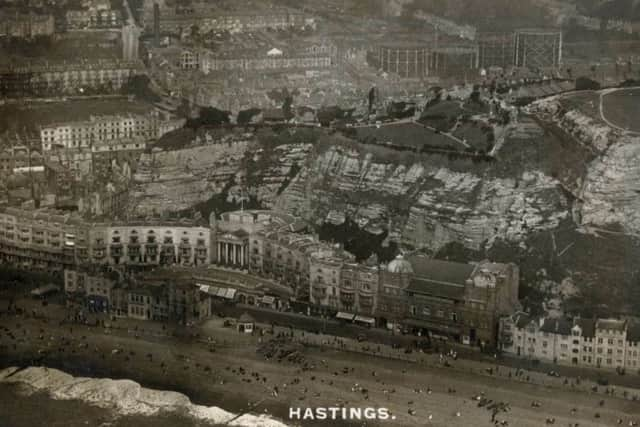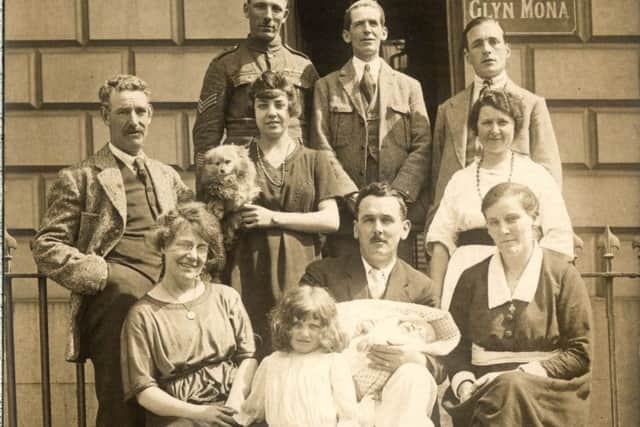A collection of curios as Square gives up its secrets
This article contains affiliate links. We may earn a small commission on items purchased through this article, but that does not affect our editorial judgement.


He writes: In the 200 years since building work started in Wellington Square we have seen its rise and fall; how the square settled into middle aged middle class decline with the fine houses and society occupiers being replaced with apartments mixed with professional and municipal offices and accommodation providers. The square is now gradually returning to domestic occupation as offices revert to residential. A garden has always occupied the centre of the square despite municipal ambitions to convert it to a car park, boosted perhaps by the fact that the local council occupied a large number of offices in the square but a compromise was reached; the area of the gardens was reduced by widening its perimeter roadway where parking could take place. Over time the trees in the square reached maturity and were replaced, the railings had been removed for the war effort and their footings removed as the roadway was widened and, as time went by the shrubberies were reduced to make maintenance easier and the air raid shelters erected on the western side are now gone and forgotten.
All illustrations throughout this series are from Ion Castro’s own collection and he can make available copies of many of the historic images used in this series. There’s more local history on Ion’s website, www.historichastings.co.uk or contact him - [email protected].
Captions:


7 Wellington Square.
Advertisement
Hide AdAdvertisement
Hide AdPosted July 1907 from No 7 Wellington Square. From ‘Percy’ to ‘Sid’ in Old Charlton telling him that he had arrived on Saturday and they wouldn’t meet up for three weeks. This ‘Platino-photo’ was published in the Peacock Series in London and printed at ‘The works in Saxony’ In the centre of the postcard can be seen Wellington College Day School for Girls. The single-axle carts below the gardens appear in many photographs of this era, were they anything to do with transporting visitors’ luggage to the Castle Hotel just out of sight on the left?
Castle Hotel.
This interesting view was published by Viewcard, probably in the mid 1930’s and beautifully illustrates the photographic technician’s art in the days before photoshop, the buildings behind the hotel have been totally removed and replaced with sky. In reality the right-hand background would have been dominated with the rear of the Gaiety Cinema. Notice the roadway marked out for bus parking. The hotel was wantonly destroyed in the 1970’s to make way for an inappropriate supermarket.


Castle Ad 1885.
This advertisement for the Castle Hotel dates from 1885 and reads
“THE above Hotel, beautifully situated in the Centre of Hastings, in front of the large open space in Wellington Square, with a splendid view of the Sea, has recently been enlarged - 40 new Bedrooms, new Coffee and Smoking Rooms having been added. It now contains about sixty Bedrooms, several Private Sitting Rooms, Ladies’ and Gentlemen’s Coffee Rooms, Commercial, Billiard and Smoking Rooms, with Commercial Stock Room approached from a side street. The Lavatories and Offices have been fitted on the most approved principles by Messrs. JENNINGS & Co., and are adapted to the requirements of a first-class Family Hotel.
LIVERY AND BAIT STABLES POST HORSES AND CARRIAGES FOR HIRE.


Flys and Omnibuses meet all Trains.
Proprietor, J.. EATON”
Advertisement
Hide AdAdvertisement
Hide AdA ‘bait stable’ provided Stabling and food for a horse at a fixed charge and a ‘fly’ was a type of light horse carriage.
Glyn Mona.


This card was posted May 1921 and shows what is probably a family group photographed outside Glyn Mona at 12 Wellington Square. Next door, at No 11, was occupied by the office of the Hastings Board of Guardians, the Rural District Council of Hastings, the Registrar of births, deaths and marriages (Wednesdays, 2 to 4; Saturdays, 6 to 8) and the surveyor and inspector of nuisances.
Hastings.
This aerial view of Hastings dates from the late 1920’s / early 1930’s and shows Wellington Square just below the cricket ground. The gasworks, once beyond the town outskirts is now surrounded with development, the chimney of the electric light works can still be seen just to the right of the cricket ground and Beach Cottages, (removed by Sidney Little in the early 1930’s as part of the seafront improvements), still block the view of the sea from Pelham Crescent and the regency houses to their left in Breeds Place / Castle Street have yet to succumb to the municipal vandalism of the 1970’s.
Memorandum.
A lease for one year from 25th June 1825 for No 10 Blucher Buildings (now Russell Street) for £45 let by Boykett Breeds whose financial situation forced him to auction the building and others he owned nearby in 1830.
Radcliffe.


Advertisement
Hide AdAdvertisement
Hide AdThe front of an early 1950’s tariff card for the Radcliffe private Hotel which operated until at least the mid 1970’s.
Radcliffe terms
The tariff at the Radcliffe, a private hotel hosted by Mr & Mrs Berryman, indicates the advantages of their situation and capitalises on the nearby bus stand. Full board could be had from as little as 5½ guineas (£5/5/0 or £5.25 today). The business was still operating in the mid 1970’s.
Wellington Place.
This hand-coloured card, posted in September 1906 shows the road at the bottom of Wellington Square, a strange thoroughfare because the lefthand side is Wellington Place and the right is York Buildings. Notice ‘The Memorial’ almost in the centre of the card and on the right at No 2 York Buildings, the ornate signage for Bruce & Co, Ironmongers etc., Robert Noonan, better known as Robert Tressell, the author of the ‘Ragged Trousered Philanthropists’ worked there in 1902.
Wellington Square 112a.
This view from a card posted in July 1906 is little changed today apart from the cutting-back of the gardens on the right to increase car-parking in the square. The greenish cast to the right is a result of the silver bromide used in the printing process becoming unstable with age.
Wellington Square colour.
Advertisement
Hide AdAdvertisement
Hide AdA Peacock Series card posted in July 1906. This ‘Platino-photo’ was published in the in London and printed at ‘The works in Saxony’ and appears to have been taken from an upper window in Wellington Place. The recipient in Kings Cross is told “Rather dull but keeping enjoying myself very much”.
Don’t miss out on all the latest breaking news where you live.
Here are four ways you can be sure you’ll be amongst the first to know what’s going on.
1 Make our website your homepage at www.hastingsobserver.co.uk
Advertisement
Hide AdAdvertisement
Hide Ad2 Like our Facebook page at www.facebook.com/hastingsobserver
3 Follow us on Twitter @HastingsObs
4 Register with us by clicking on ‘sign in’ (top right corner). You can then receive our daily newsletter AND add your point of view to stories that you read here.
And do share with your family and friends - so they don’t miss out!
The Hastings Observer - always the first with your local news.
Be part of it.